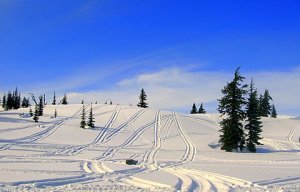Emelda Doyon
Walking through the social media Maze
Social Media Journal #2
Journal #2 Building on the Social Layer
The game layer on top of the world
Objective:
Seth Priebatsch one of the Ted Talks motivational, video speakers talks about building the framework for motivating people. He states that social media like Facebook and Twitter established the framework for the next phase, which is behavior control and the motivation behind it. Game theory is a dynamic being used to create motivation. He insists that the future is not about connecting but influencing behavior.
He discussed four Dynamics needed to achieve this.
1. Appointment
2. Influence
3. Progression
4. Communal Discovery
For each dynamic he gives examples how these dynamic are implemented in the real world, in the conventional gaming world and how these dynamics will influence consumers e.g. reminders when to take meds.
Reflective:
He began his talk with the mention that he was a high school dropout. Was this intended to impress his listeners? Or make us feel more comfortable with his talk?
By the tone of the video, Seth is talking to most of the young, new hip generation. The people, who would camp out in all kinds of weather to be the first with the newest gadget… I am not a gamer and I was never one to follow the trends like owning a “ black credit card”. Most of the things he referred to in his speech were new to me but I
suspect he knew his audience.. From his comments he assumed the listeners knew what he was referring to. I didn’t most of the time.
Since listening to the video I have been paying more attention to what motivates
people. I noticed that the TV program “The Walking Dead” had 3 clues the watcher had to get from the program, and then answer the questions on Facebook to be entered into a draw to win a new car. I know this will motivate some people to watch the TV show.
Interpretive:
Seth is one of the new generation who is media knowledgeable and think they can influence society by not only providing us with the next new gadget, but also making us feel worthless or left out when we do not own the latest phone or game console. He is part of the new technical generation who has to be the first with what in their opinion is the next best thing.
Decisional:
I am just realizing how powerful Social Media already is since I began doing this Media Course. I have always thought that this medium was quite invasive and anonymous. The thought of the general public and people on Facebook, Twitter etc can follow my every move, e.g. my shopping habits, places I frequent, and predict when I would be there by the motivation that is provided is really very frightening to me. What about my freedom and will to make independent decisions? As part of the human race are all unique individuals. I think some or all of this individuality and uniqueness would be lost if we played “ the game layer on top of the world.”
References:
http://www.ted.com.talks/lang/en/seth_priebatsch_the_game_layer_on_top_of_the_world.html(Seth Priebatsch: The game layer on top of the world)



